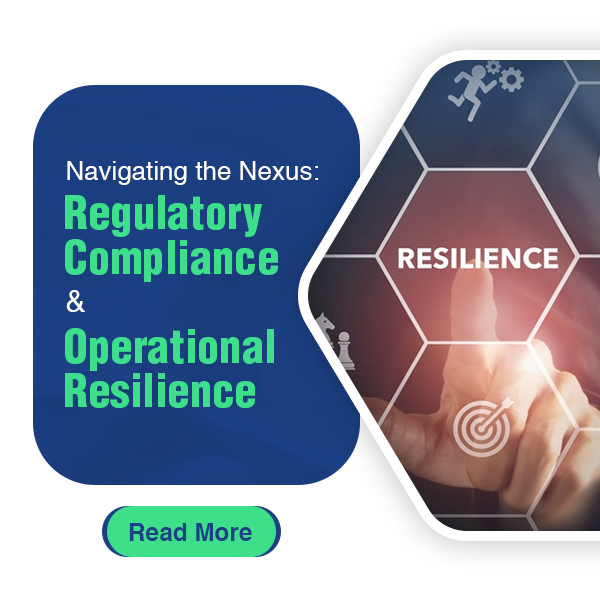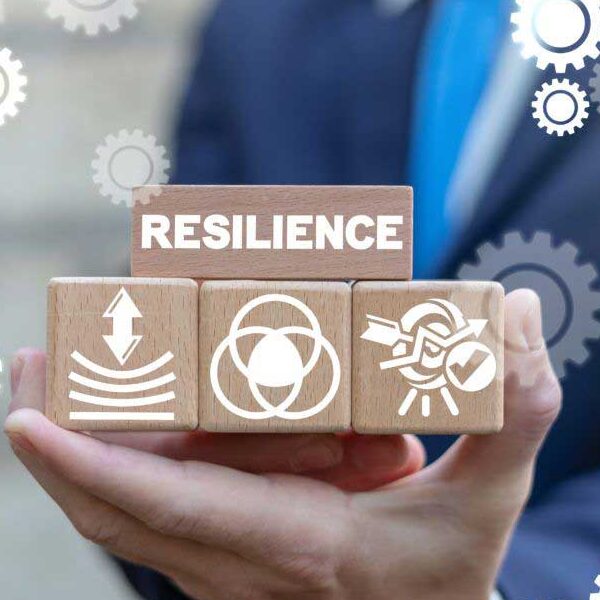In intricate modern business, two critical elements that share the spotlight are regulatory compliance and operational resilience. As organisations navigate a dynamic landscape fraught with uncertainties, the symbiotic relationship between these two factors becomes increasingly apparent.
Understanding the Interplay
At the heart of operational resilience lies the ability to withstand and adapt to disruptions, a capability that is intricately linked to compliance with industry regulations. The foundation for a resilient organisation begins with a comprehensive understanding of the regulatory framework that governs its operations.
By aligning organisational practices with industry standards, companies can build a resilient infrastructure that anticipates and mitigates risks. Furthermore, a deep comprehension of regulatory requirements enables organisations to integrate resilience seamlessly into their daily operations, fostering a culture of adaptability and preparedness. In essence, the interplay between operational resilience and regulatory compliance forms a symbiotic relationship, where adherence to regulations becomes a catalyst for fortifying the organisation against unforeseen challenges, thereby ensuring its sustained success in an ever-evolving business landscape.
Identifying Regulatory Risks
Identifying regulatory risks is a critical aspect of corporate governance, requiring companies to undertake a meticulous examination of the ever-evolving compliance landscape. This process involves a comprehensive analysis of regulatory requirements, industry standards, and regional variations that may impact business operations. By staying attuned to these dynamic elements, organisations can proactively detect potential regulatory challenges before they escalate, enabling them to formulate a robust and agile response strategy. Early identification not only enhances a company’s ability to adapt to changing regulatory demands but also fosters a culture of compliance that can mitigate potential legal and financial consequences. As the regulatory environment continues to evolve, a proactive and vigilant approach to risk identification remains a key component of successful and sustainable business management.
Country-wise Resilience Regulatory Bodies
Nonetheless, several nations incorporate resilience factors into the current regulatory frameworks for a variety of industries. For instance, organisations such as the Federal Emergency Management Agency (FEMA) are crucial to the preparation and management of disaster resilience in the United States. The National Resilience Taskforce in Australia works with many agencies to improve preparedness for emergencies and natural catastrophes. It is important to remember that resilience is not the sole domain of a regulatory agency; rather, it is frequently included in larger regulatory frameworks. In Saudi Arabia, resilience efforts are integrated into regulatory frameworks through SAMA. In United Arab Emirates (UAE) addresses resilience within its regulatory frameworks, spearheaded by the National Emergency Crisis and Disaster Management Authority (NCEMA). The Qatar Financial Centre Regulatory Authority (QFCRA) is the regulatory body for resilience in Qatar.
Crafting a Compliance-Resilience Blueprint
Crafting a compliance-resilience blueprint marks a pivotal phase in organisational risk management, seamlessly advancing from the identification of regulatory risks.
The Role of Technology in Compliance-Resilience Integration
Technology plays a key role in this integration in the digital age. In addition, technology offers data analytics, automatic compliance checks, and real-time monitoring capabilities. In addition to improving compliance, these technology enablers provide organisations with the ability to proactively detect and resolve possible vulnerabilities, which promotes a proactive operational resilience approach.
1 Automation of Routine Compliance Tasks
This increases productivity while lowering the possibility of mistakes that come with manual methods.
2 Centralized Data Management
Technology facilitates the centralization of data, creating a single source of truth for compliance and resilience-related information. This centralised repository enables organisations to have a holistic view of their compliance status and resilience measures.
Centralized data management improves transparency and accountability, allowing stakeholders to access relevant information easily. This is particularly important during audits or regulatory inspections.
3 Advanced Analytics for Risk Assessment
By examining huge datasets, data analytics technologies assist organisations in carrying out comprehensive risk assessments. By taking a proactive stance, companies can spot possible compliance risks and vulnerabilities before they become serious problems.
Organizations can take preventive action by using predictive analytics to foresee possible compliance issues in the future. Building long-term resilience against changing regulatory landscapes requires this kind of forethought.
4 Real-Time Monitoring and Alerts
Technology enables real-time monitoring of transactions, processes, and systems, providing immediate visibility into compliance-related activities. This instantaneous feedback allows organisations to respond promptly to any anomalies or deviations from compliance standards.
This real-time responsiveness enhances an organisation’s ability to mitigate risks and maintain compliance in dynamic business environments.
5 Integration of Emerging Technologies
Integration of emerging technologies such as artificial intelligence (AI) and blockchain can further strengthen compliance-resilience integration.
Measuring Success and Preparing for Future Challenges
A thorough analysis of performance metrics, or key performance indicators (KPIs), and the consistency of results with initial expectations are necessary for success, which is frequently characterised by the accomplishment of preset goals and objectives. At the same time, anticipating problems and being proactive requires foresight, flexibility, and responsiveness.
organisations must gauge the effectiveness of their compliance-resilience strategies through key performance indicators (KPIs) and feedback loops. This iterative process prepares them for future challenges, ensuring an adaptive and forward-thinking stance.
Key takeaways
In conclusion, “There was a constant shift in the link between operational resilience and regulatory compliance. Organisations may not only manage the complexity but also emerge from them stronger and more adaptable to change by realising how these factors are interconnected and using transition words to help us through the complicated
Our resilience management platform, “AutoResilience“, is industry-leading and has four modules for risk, crisis, business continuity, and cyber resilience. Recognised by analysts like Gartner and Forrester, we’ve helped numerous banks globally reduce the impact of disruptions, ensure regulatory compliance, and safeguard reputation.













